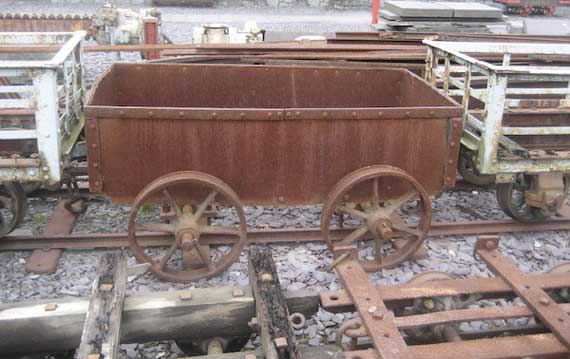Nantlle Railway
The Nantlle Railway was a Welsh narrow gauge railway
built to carry slate from several slate quarries in
the Nantlle Valley to the harbour at Caernarfon for
export by sea. The line received its Act of Parliament
in 1825 and was constructed by Robert Stephenson, the
brother of George Stephenson. It opened in 1828 and
was operated using horse power. Although built solely
for the transport of slate, the line is known to have
carried passengers at various times between Caernarfon
and Penygroes.
The railway was absorbed into the Carnarvonshire Railway
in 1865 and later the London and North Western Railway.
The main part of its route, from Caernarfon to Penygroes,
was rebuilt in 1867, in places on an adjacent alignment,
to single track standard gauge main line standards
to allow the operation of the Carnarvonshire Railway's
steam hauled trains through to Afon Wen. The lower
valley section from Penygroes to Talysarn (where transhipment
yards were laid out) was converted to standard gauge
in 1872. The remainder of the line continued in use
as a horse drawn tramway linking Talysarn with several
local quarries, and was operated as such by the LNWR.
From 1923 it was operated by the London Midland and
Scottish Railway and from 1948 until 1963 by British
Railways
as far
as
the Pen-yr-Orsedd quarry. It is the last recorded use
of horses by BR.

Image: One of the Nantlle tramway
wagons (preserved at the Welsh Slate Museum, Llanberis).
The narrow gauge line was a form of wagonway constructed
to a gauge of 3ft 6in and equipped with
four wheeled wagons fitted with double-flanged wheels,
which were loose on fixed axles. The wagons were owned
by the tramway, rather than the quarries and the many
that survived into BR ownership had narrow steel plate
bodies, which were mounted between the wheels and bolted
to the axles.
Useful links
»» The
Welsh Highland Railway Project - official reconstruction site 
»» Rebuilding
The Welsh Highland Railway - an independent site  |